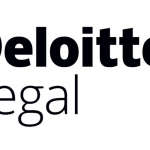1. Could you explain the key differences between secured and unsecured loans in the context of Dutch banking and finance transactions?
In a secured loan the payment obligations of the borrower are secured by security rights over assets of the borrower or a third party. In a bankruptcy scenario, a secured creditor can enforce these security rights as if there were no bankruptcy and in principle ranks ahead of all unsecured creditors subject to exceptions. Unsecured creditors rank pari passu in terms of payment with the claims of the borrower’s other unsecured creditors, have to submit their claims for verification with the bankruptcy trustee and cannot unilaterally enforce their claims as if there were no bankruptcy.
2. How do the security structure and parallel debt concepts work within Dutch financing transactions, and what advantages do they offer to lenders and borrowers?
A parallel debt structure is generally used in secured finance transactions where there is more than one lender. A parallel debt clause provides that any amount owed to a lender is also owed to the security agent, thereby creating a parallel debt vis-à-vis the security agent to ensure that Dutch law governed security rights can be held by the security agent for the benefit of all lenders. A parallel debt structure is used because it facilitates the accession and resignation of lenders and the transfer of loans, because it is uncertain if a security agent can hold security for the benefit of the lenders without being a creditor itself and because joint security of the lenders is not practical.
3. Can you outline the steps and legal requirements for creating valid security rights over assets in the Netherlands, including real estate and movable property?
Security over receivables is created by way of a deed of pledge. The pledge can be disclosed or undisclosed. If undisclosed, the deed needs to be date-stamped by the tax authorities or signed as a notarial deed. Security over shares is created by way of a notarial deed of pledge. Security over movable assets is created by way of a deed of pledge. The pledge can be possessory or non-possessory. If non-possessory, the deed needs to be date-stamped by the tax authorities or signed as a notarial deed. Security over real property is created by way of a notarial deed of mortgage and registration thereof in the land registry.
4. In the event of insolvency, what protections do secured creditors have under Dutch law, and how does the ranking of claims play out in practice?
A secured creditor may enforce its security rights as if there were no bankruptcy, provided that it could be subjected to:
i. a cooling off period (afkoelingsperiode) for a maximum of four months during which the right to enforce a security right is temporarily suspended;
ii. a request from the bankruptcy trustee to enforce the security right within a reasonable term; and
iii. although there is debate in the legal literature in this regard, having to notify the tax authority in respect of the execution of certain movable assets which qualify as bodemzaken.
In case the secured creditor fails to exercise its rights as a so-called ‘separatist’ within a reasonable term, including its right of summary foreclosure (parate executie) or in respect of receivables, to collect such receivables, the bankruptcy trustee may sell the assets, in which event the secured creditor retains its right of priority to the proceeds, but has to share in the bankruptcy costs.
5. Could you provide insights into the Dutch schemes of arrangement and how they are utilised for financial restructuring or debt reorganisation?
With the entry into force of the Act on Court Approved Pre-Insolvency Schemes (WHOA) on 1 January 2021 the Netherlands adopted a powerful restructuring tool for debtors in financial difficulties which is inspired by the UK Scheme of Arrangement and the Chapter 11 bankruptcy proceeding in the United States. It is increasingly used in the Netherlands also against the backdrop of the current economic downturn and increased interest rates. Under the WHOA, a debtor or a court-appointed restructuring specialist may offer an extrajudicial restructuring plan to the debtor’s creditors and shareholders. Once the restructuring plan is approved by at least one class of creditors and subsequently approved by the court it becomes binding on all affected parties (creditors and shareholders who have voted against the restructuring plan can be (cross-class) crammed down, subject to certain conditions and limitations).
6. What are the key components of bankruptcy remote special purpose vehicle (SPV) structures, and how do they contribute to minimising bankruptcy risks?
A Dutch SPV is usually incorporated as a private company with limited liability with its sole shareholder being a newly incorporated Dutch foundation. The board of directors of each of the SPV and its shareholder is formed by a trust company. The creditors of the SPV are limited to the parties which form part of the structured finance structure and the transaction documents normally include non-petition and limited recourse clauses. Any insolvency proceedings against the originator should not affect the SPV.
7. How do non-petition clauses function in the context of bankruptcy remote SPV structures, and what legal enforceability do they have under Dutch law?
Pursuant to a non-petition clause counterparties of the SPV agree that they will not initiate insolvency proceedings against the SPV or take any other steps which may lead to the dissolution or liquidation of the SPV until all the payment obligations of the SPV are fully satisfied. Non-petition clauses, especially in combination with no action clauses, are considered in the legal literature to be effective. However, absent case law in this regard, it cannot be ruled out that a Dutch court would consider a petition for bankruptcy even if such petition was presented in breach of a non-petition clause.
8. Can you explain limited recourse clauses and their significance in structured finance transactions?
A limited recourse clause limits a creditor’s right of recovery and comes in various forms for instance, to create a bankruptcy remote SPV. For example, the recourse liability of the SPV can be limited to the assets of the SPV which have been pledged to the security trustee for the benefit of the creditors of the SPV. Under Dutch law a limited recourse clause is legally valid and enforceable against third parties and a bankruptcy trustee and legal successors of the creditor are also bound by this clause.
9. What legal mechanisms are in place to ensure the true sale of securitised assets to SPVs, and how do these mechanisms help in mitigating potential risks?
Depending on the commercial preference of the originator, receivables are transferred by way of a disclosed assignment, an undisclosed assignment or a contract takeover. If receivables qualify as future receivables certain limitations apply to transferring such receivables on an undisclosed basis. Also, any assignment in advance of future receivables will not have effect in case such future receivables are obtained after the originator is declared bankrupt. Risk mitigation in relation to future receivables depends on the nature of the securitised asset. For example, in Dutch car lease securitisations the cars are transferred by way of hire purchase to the SPV and the associated future lease receivables qualify as proceeds of the hire purchased car and transfer to the SPV by operation of law as a result (and are transferred by way of assignment and contract takeover as a backup procedure to the extent necessary).
10. In the context of covered bond structures, what safeguards and regulations does Dutch law provide to ensure the security and stability of these financial instruments?
Covered bond structures differentiate from securitisation structures by employing a dual recourse structure. Covered bond holders have recourse against not only the underlying cover assets which are transferred on the basis of a guarantee support agreement through undisclosed assignment, but also against the relevant licensed bank active in the Netherlands which issues the covered bonds. Although there is legal debate in this regard, covered bonds in principle cannot be written down following a bail-in intervention of the national authorities in relation to the covered bond issuer.
For more information contact

Vasco Hoving, Counsel
E: vasco.hoving@rutgersposch.com

Maarten Ahsmann, Senior associate
E: maarten.ahsmann@rutgersposch.com

Jamie Pellegrom, Senior associate
E: jamie.pellegrom@rutgersposch.com














